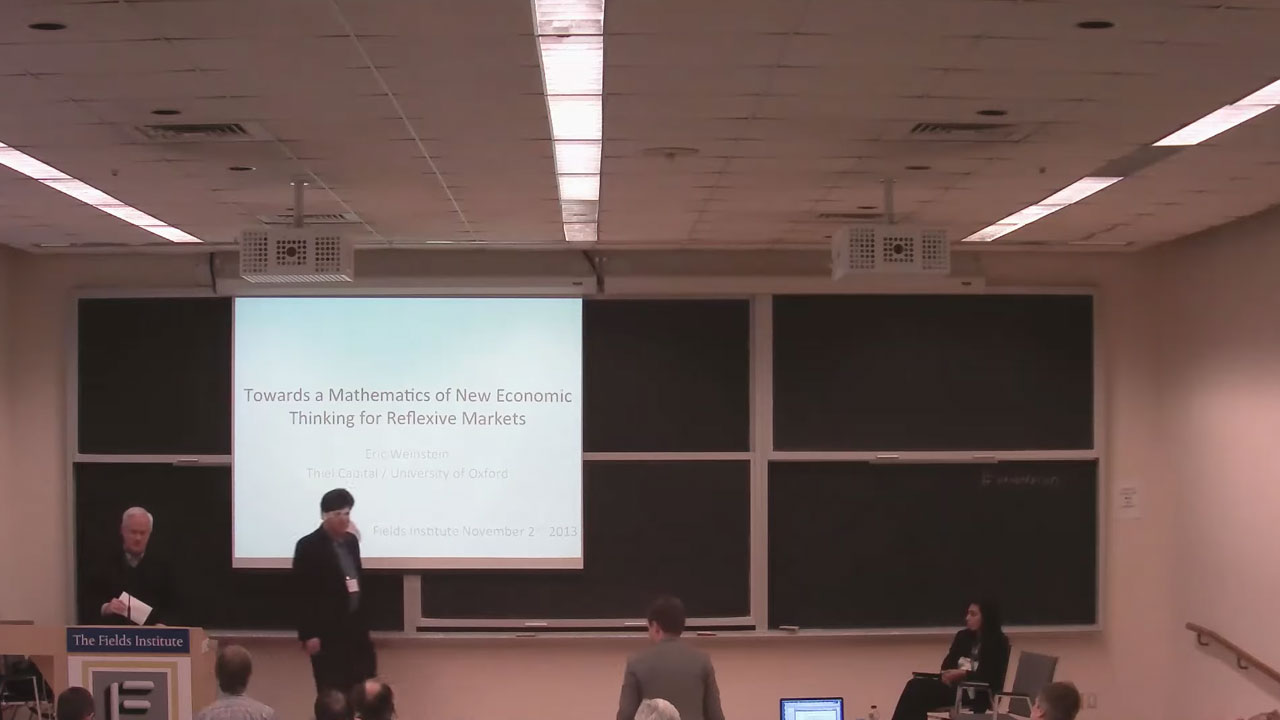This essay was originally published in 2013 on https://www.quora.com
Since the excellent and clear article by Prof. Edward Frenkel inspiring this question focuses on my joint work with the economist Pia Malaney, I would be happy to say a few words here. This may be considered a brief sketch of our program through the Institute for New Economic Thinking (INET) to introduce what we have termed ‘Geometric Marginalism‘ to economic theory.
I can’t quite do this from scratch and keep it brief so I am going to assume that the reader has a basic familiarity with economics and has read the answers to the Quora question:
including my radically short (though not yet particularly popular!) answer:
There is something like a central dogma of gauge theoretic economics:
- Markets decompose human activity into complementary income and substitution effects, and also organize economic models into topological bundles.
- Gauge theories decompose topological bundles into complementary vertical and horizontal subspaces.
- In bundles determined by markets, generalized income effects correspond to vertical subspaces while generalized substitution effects correspond to horizontal subspaces.
- Gauge theories are theories of derivative operators which define the derivative as the Rise over the Run with the nuance that the Rise is measured from a horizontal reference level defined endogenously within the theory.
- Economic theory is implemented ‘on the margin’ using the differential calculus which is referred to in economics as ‘marginal analysis’. Thus gauge theoretic economics is marginal analysis done properly relative to horizontal reference levels corresponding to economically meaningful endogenous substitution effects rather than mathematically formal exogenous (and thus economically irrelevant) reference levels.
- This program for geometric marginalism is a 100% backwards compatible upgrade for modern economic theory. That is, geometric marginalism completely contains modern marginal analysis so the risk of adoption is zero.
Roughly speaking markets allow us not only to compare apples with oranges but also, via the price mechanism, with aircraft carriers and tango lessons. If we mathematically allow for negative tango lessons we might say that
125 Apples−1Tango Lesson125 Apples−1Tango Lesson
was a generalized ‘basket’ of zero value in a pricing system that valued apples at 1 dollar each and tango lessons at 125 dollars an hour. Thus changing your consumption by cutting down on dance and bulking up on apples to make pies for a family feast could represent a neutral (horizontal) market effect while simply buying a small and proportional amount more of everything would be impossible without further expenditure.
Now there are many nuances here. Perhaps there is more than one pricing system as with multiple currencies. Maybe the individual has a different internal measure of psychic substitution and psychic income effects than does the market. What if these individuals tastes are seasonal and cyclic? Perhaps there is a population of individuals rather than a single agent. Should prices and tastes change simultaneously, how can one separate the effects to compare the price of happiness in two different regimes?
All of these questions belong to the general program for Geometric Marginalism, but the above central dogma is the heart and soul of why upgrading economic to gauge theoretic differential operators is a risk free proposition that simply makes intuitive economic and mathematical sense.
The recent excellent book by Jim Weatherall entitled ‘The Physics of Wall Street’ in the US (and ‘The Physics of Finance’ in the UK) covers the story of our original introduction of gauge theoretic techniques into economics in chapter 8 and the Epilogue. I recommend it.
[I will write more here and improve the answer if there is sufficient interest from the Quora and relevant communities.]







